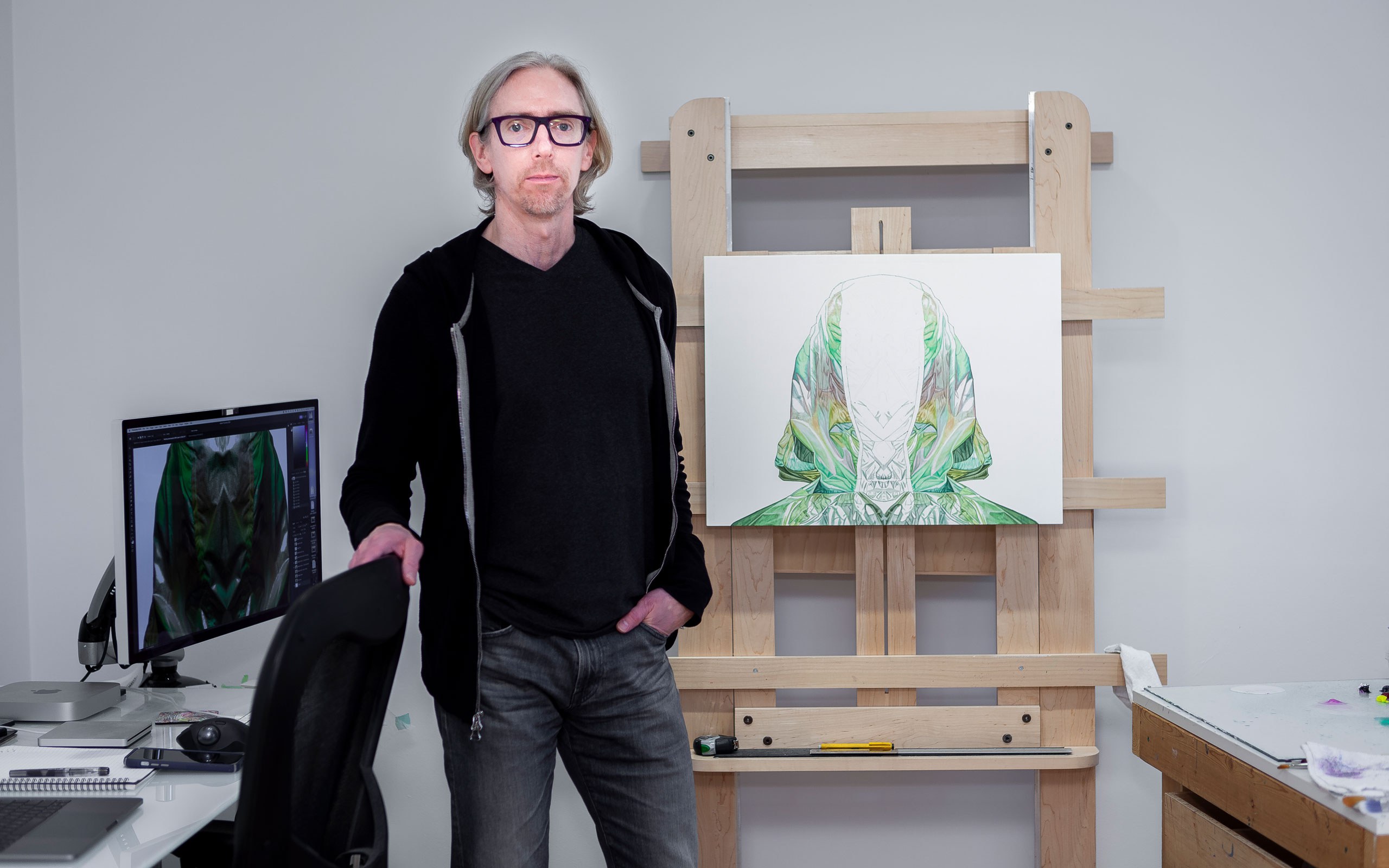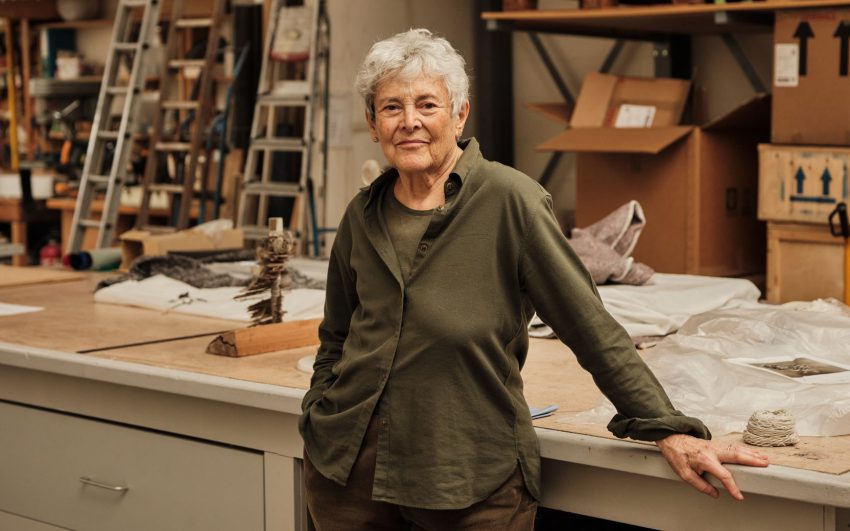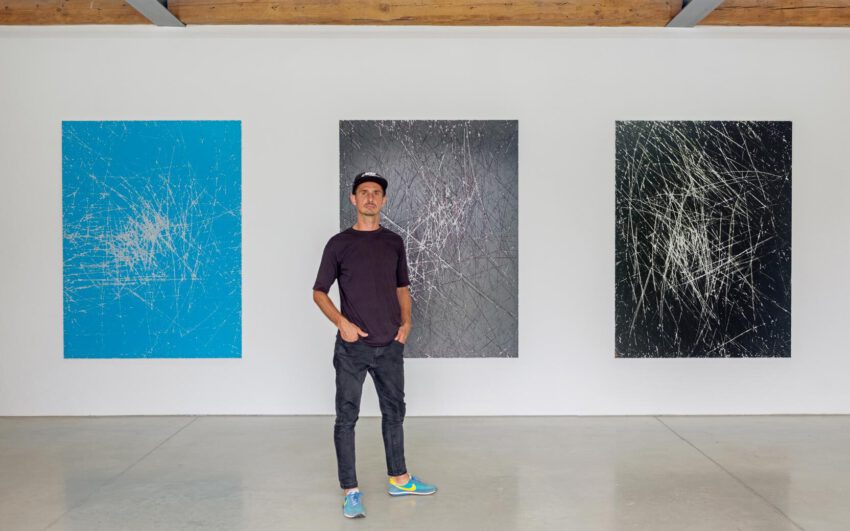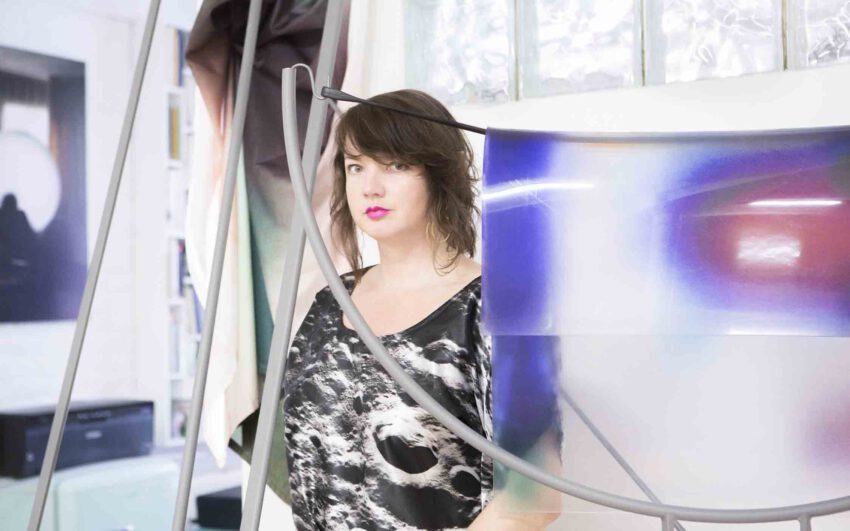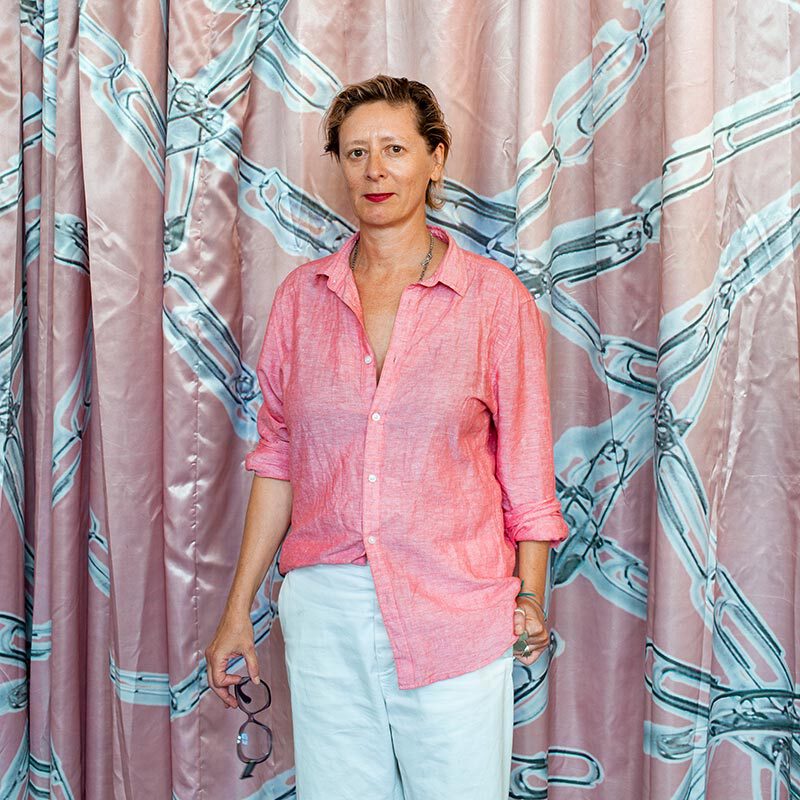Contemporary urbanism meets the traditions of Renaissance portraiture. Unlike the classical painters, who were focused on their character’s faces, Canadian artist Karel Funk takes a closer look at people’s hoodies – the attributes of street wear often overlooked. The subjects in his paintings are completely anonymous yet retain individuality, still but not static, concealed yet transferring emotion; the artist is present, but his subjects are not necessarily so.
Karel, if you were asked to describe your art to a stranger, what would you say?
I think it is clearer to explain what the paintings are not. Often people look at images of the paintings and assume that they are photorealist works, furthermore, they perceive this assumption as a compliment. To me, it’s not at all the case, they are not photorealistic, but highly subjective paintings rendered in a very precise style. Earlier in my work I really searched for a connection between contemporary life and paying homage to the history of portraiture painting. This bridge between the past and present is still in the paintings I’m doing now. However, I’ve become more focused on the paintings becoming as complex and intense as possible, but at the same time distilling any unnecessary elements and trying to keep them as simple as possible. I am trying to find a balance between all of these aspects.
At first, your works were portraits of people, later on only a part of the face could be seen. Currently, we only observe hoods in your artwork. Have you lost interest in depicting people?
My newer works made in the past couple of years are not quite as firmly grounded in portraiture as they used to be. I feel that the presence of the figure under the hood is starting to dissipate, and it is not as much of a priority. The fabric and the material is where I find more possibilities and the freedom to explore different directions. I work within tight parameters so even a small maneuver for me becomes a significant change. Painting the human form even as obscured as it is in some of my paintings became less important to the needs of the painting over time.
Is this a previous level for you?
The rendering of someone’s hair, flesh, and other personal attributes must be precise and I never abstracted them. But when painting modern fabrics, I can be precise yet also let small subjective abstractions happen in the painting process. So, the two became different ways for me to paint and I started to feel they had to be separated. Now the hooded jackets give me new opportunities to explore without needing to stay faithful to the exactitude of human attributes. If and when I do paint a portrait of someone now or in the future it will be a different process for me.
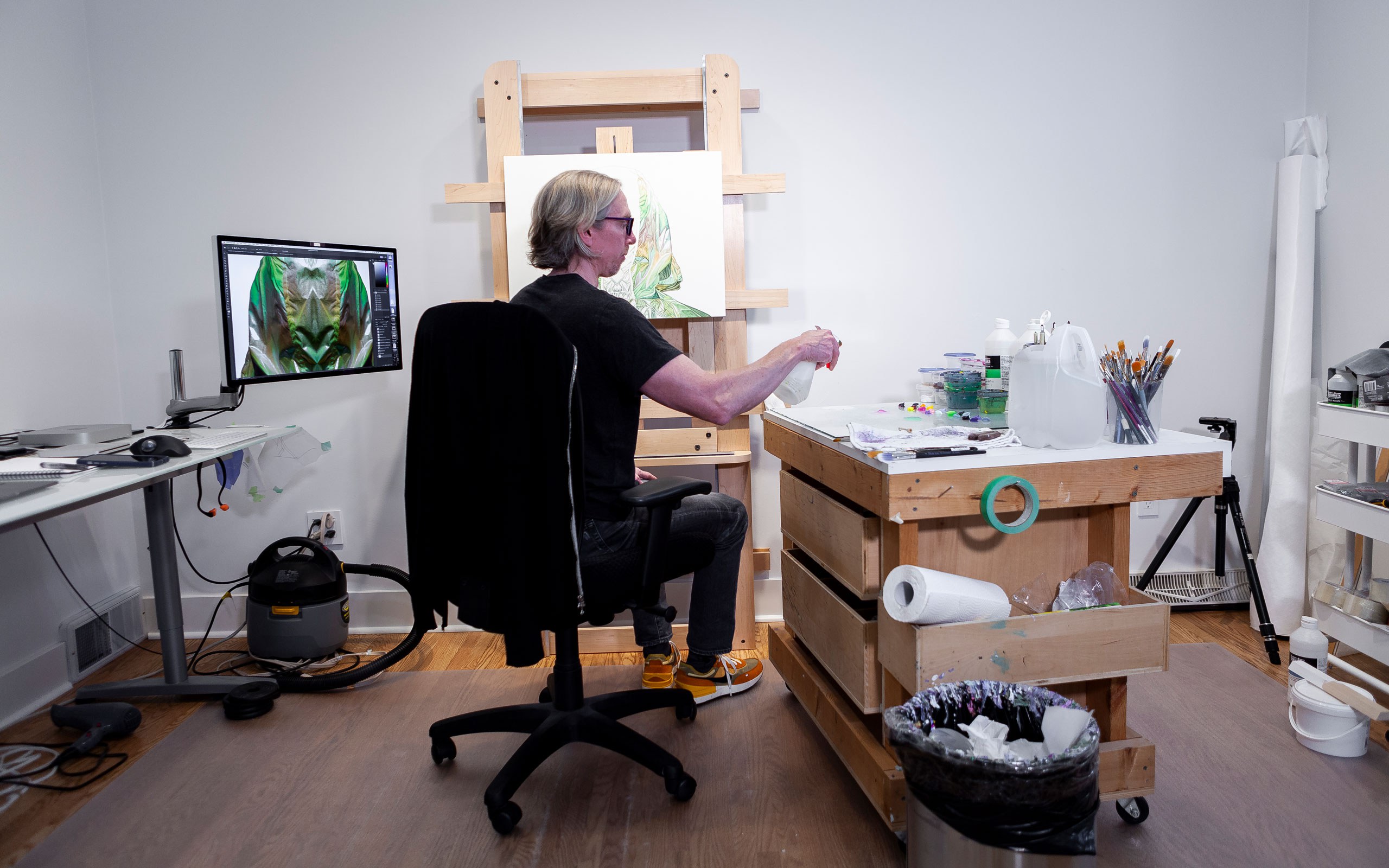
When did you realize that hooded figures were your long-term interest as an artist?Twenty years ago, while living in New York and pursuing my MFA, I was really unsure of what could be exciting for me to paint. I knew I wanted to create figurative or realist paintings, but I also wanted to find my own voice. I started going to the Metropolitan Museum a couple of times a month and started to really become captivated by so many of the Renaissance portraits and Dutch paintings. I also loved (and still do) go to the Frick collection. I didn’t have the opportunity to see so many historical paintings in person in Winnipeg. The Winnipeg Art Gallery is fantastic, but they don’t have that many historical paintings, so looking at these paintings in person was an incredible thrill and I slowly began contemplating whether I could draw inspiration from them and bring something from them into my own work.
Who became the first hooded character to be featured in your works?
On a cold windy day on campus, I was talking to a friend, and he had his jacket hood up covering his entire head except for his nose protruding from the opening. I just liked the image of it so I had him come by the studio and I took a photograph of him in the same jacket and pose. I painted it, and gradually, I started exploring various options with different hoods and different people. I had good conversations about this work and slowly it started to feel like it could be a path that could lead to an interesting bridge between the past and present while still having my own voice. I guess it was only after graduating with my MFA that I fully realized this was something I could work and focus on long term.
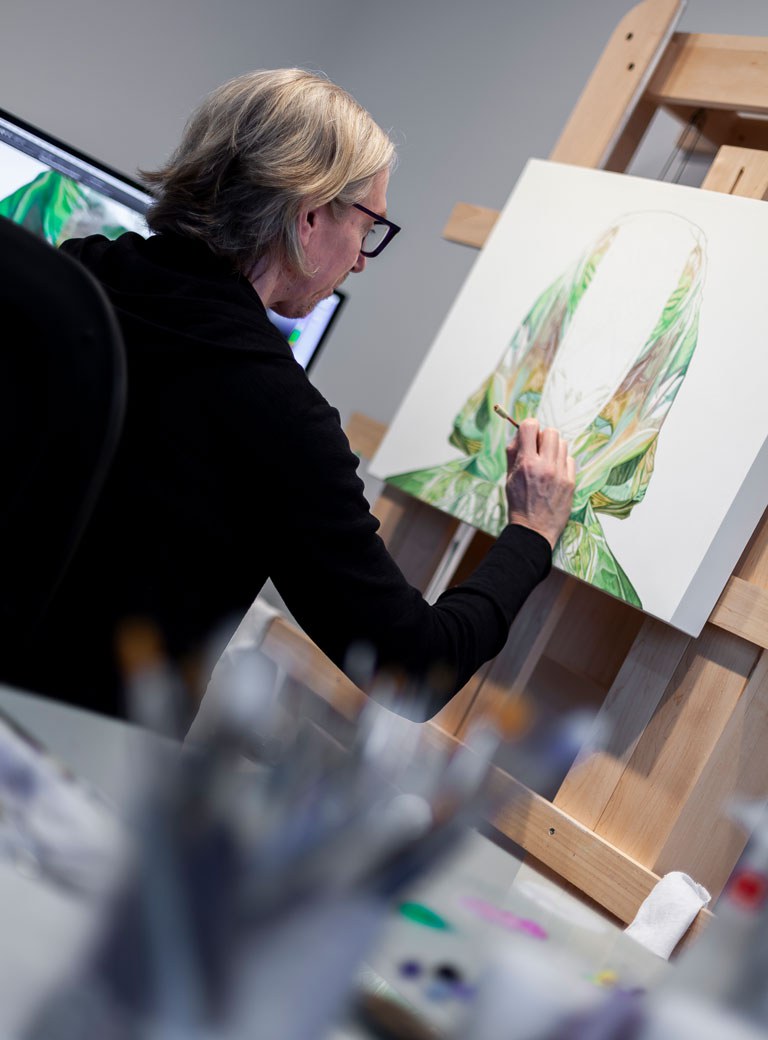
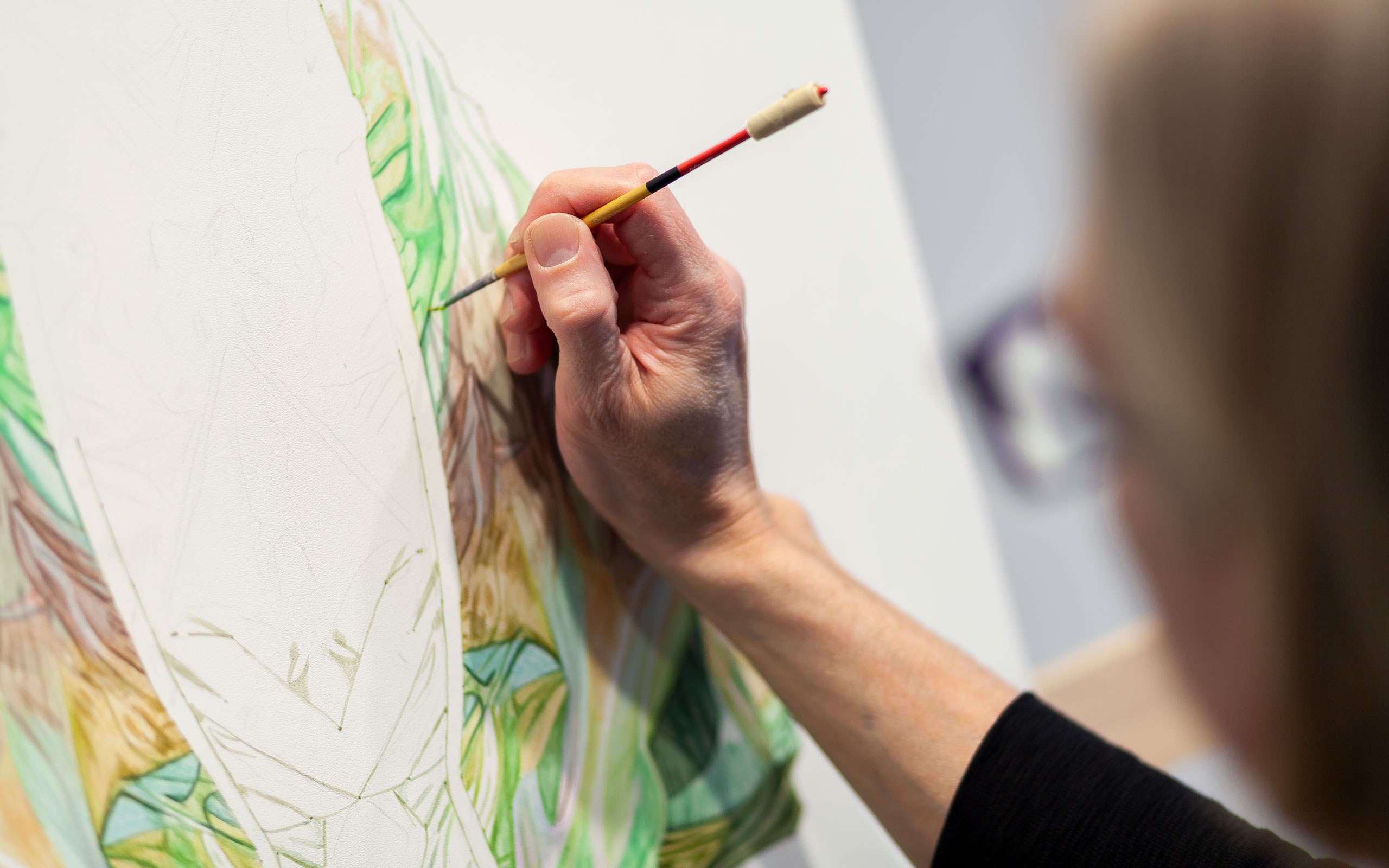
Why are many hoods on your paintings sporty?
Some of the hoodies in my paintings are definitely reminiscent of sports hoodies, but there are also many hoods made from traditional winter or rain jacket materials, particularly in my earlier works. About six or seven years ago, I started incorporating athletic-like hoodies commonly seen at gyms or really everywhere now. Early on a lot of the jackets I painted were inspirations influenced by my travels to New York, where I observed many people in urban wear during colder temperatures, then it became hoodies and jackets from everywear in pop culture. However, in my newer works, there is no direct connection to my daily experiences, such as walking around or experiencing winter. The relationships have become different.
In what way?
Currently, I am looking only for unique materials without any concern for their brand names or existence in pop culture, or whether it's a $20 jacket or a $1000 jacket, I am interested in it if it possesses intriguing colors, materials, or unique designs. This is why I frequently shop online, as I am unlikely to find these kinds of jackets elsewhere easily.
I assume you’ve already collected a lot of jackets over the years?
My closet is filled with jackets, and I also have bins containing jackets I have accumulated over the years. I do donate some jackets but keep others around in case I have more use for them. Sometimes, I purchase five or six jackets at once and bring them into the studio. Some of them work out, some of them don’t.
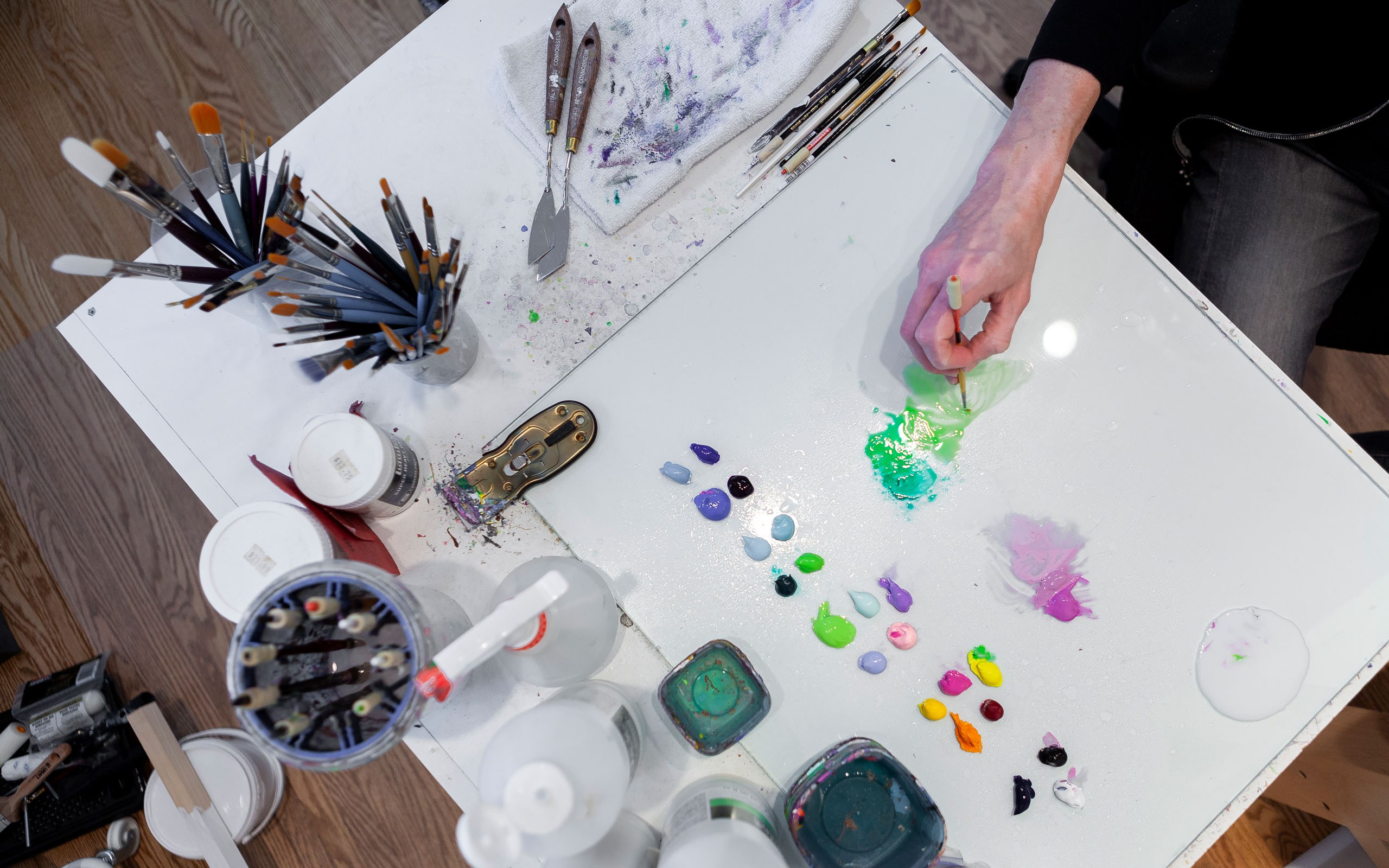
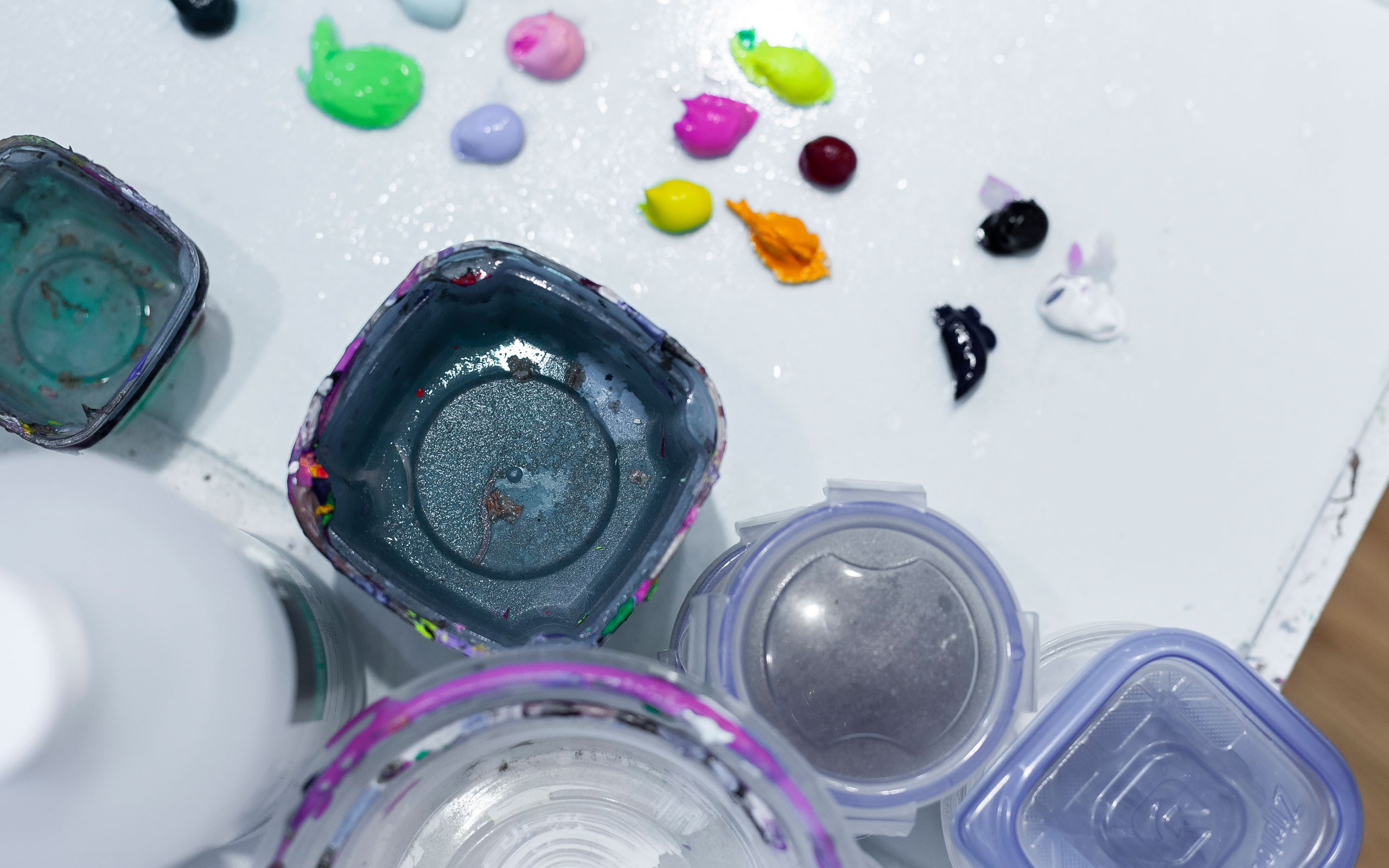
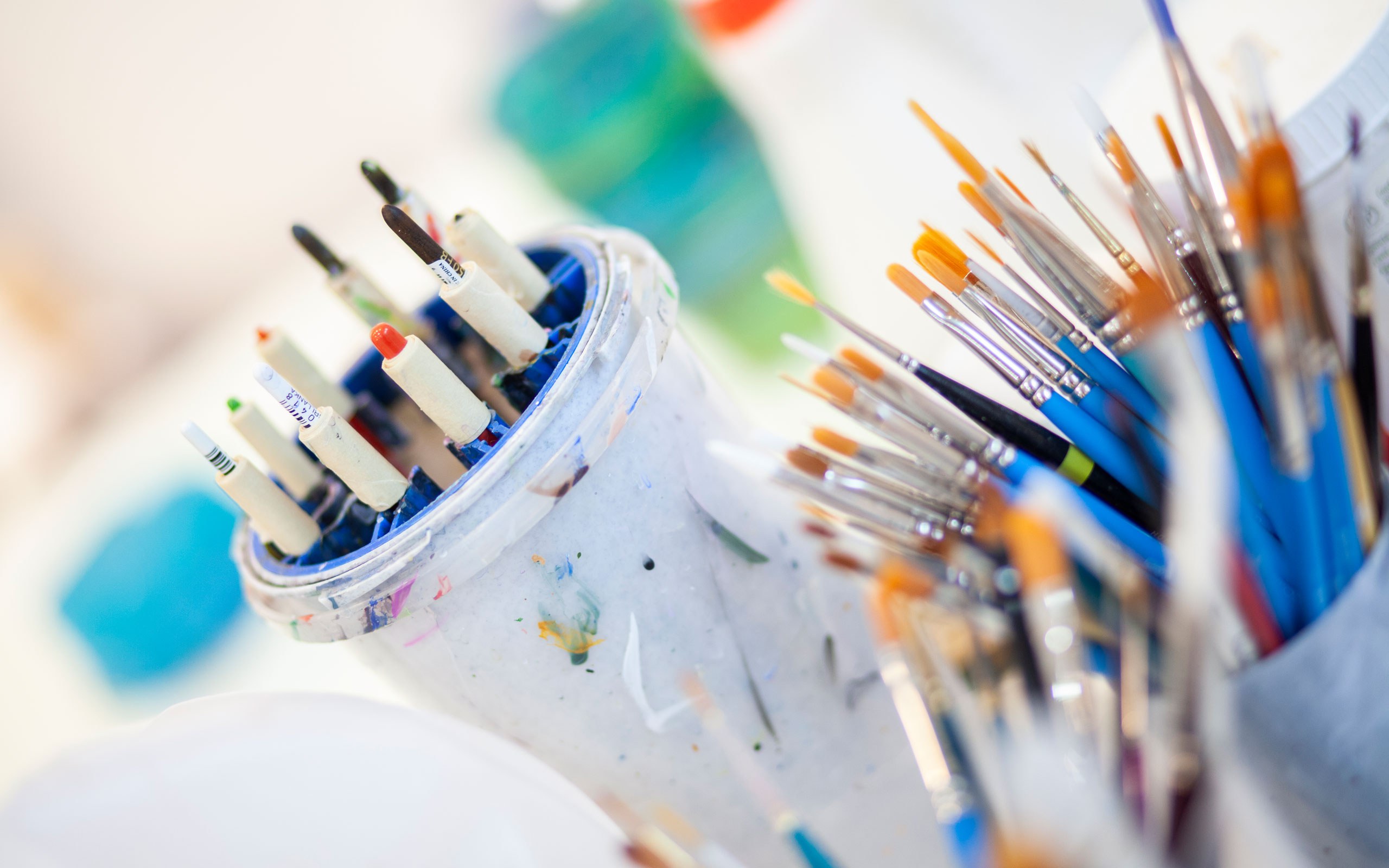
Could you outline the entire process of creating one painting?
When people were present in the work, I photographed the model and jacket together but now that I have eliminated people, I’ve begun using a mannequin. This allows me to spend more time working the jacket into an interesting form, sculpting it. Sometimes I use tape or tissue paper stuffed under the jacket to fold and crease the jacket and create interesting designs and to hold it in place. Then I start photographing the jacket. Once I have finished photographing, I move to Photoshop, where I manipulate and experiment with different layers, cutting, pasting, and distorting elements.
How does photoshopping change your artistic method?
Photoshop helps me make big decisions about the image first so I can determine the direction I want to take the painting in. In my previous work when I painted people under the hoods there was really no Photoshop involvement. I worked directly from the photographs. Now Photoshop has become a more integral part to my painting process, allowing me to explore more abstract and surreal aspects.
What kind of transformation is happening with the photo?
I spend time cropping, pasting, warping, and rearranging elements and layers. In my current paintings they are perfectly symmetrical on both sides so to achieve this I create one half of the painting image first and carefully determine its appearance. Then, I duplicate the image, and using Photoshop, flip the duplicate and merge the two halves together. After that I bring the image onto the panel. I paint with acrylic and I start painting in very thin layers and start building up the surface. The layers can at times be very thin, almost like watercolor. This thin layering helps keep the colors rich and can create a translucent like effect.
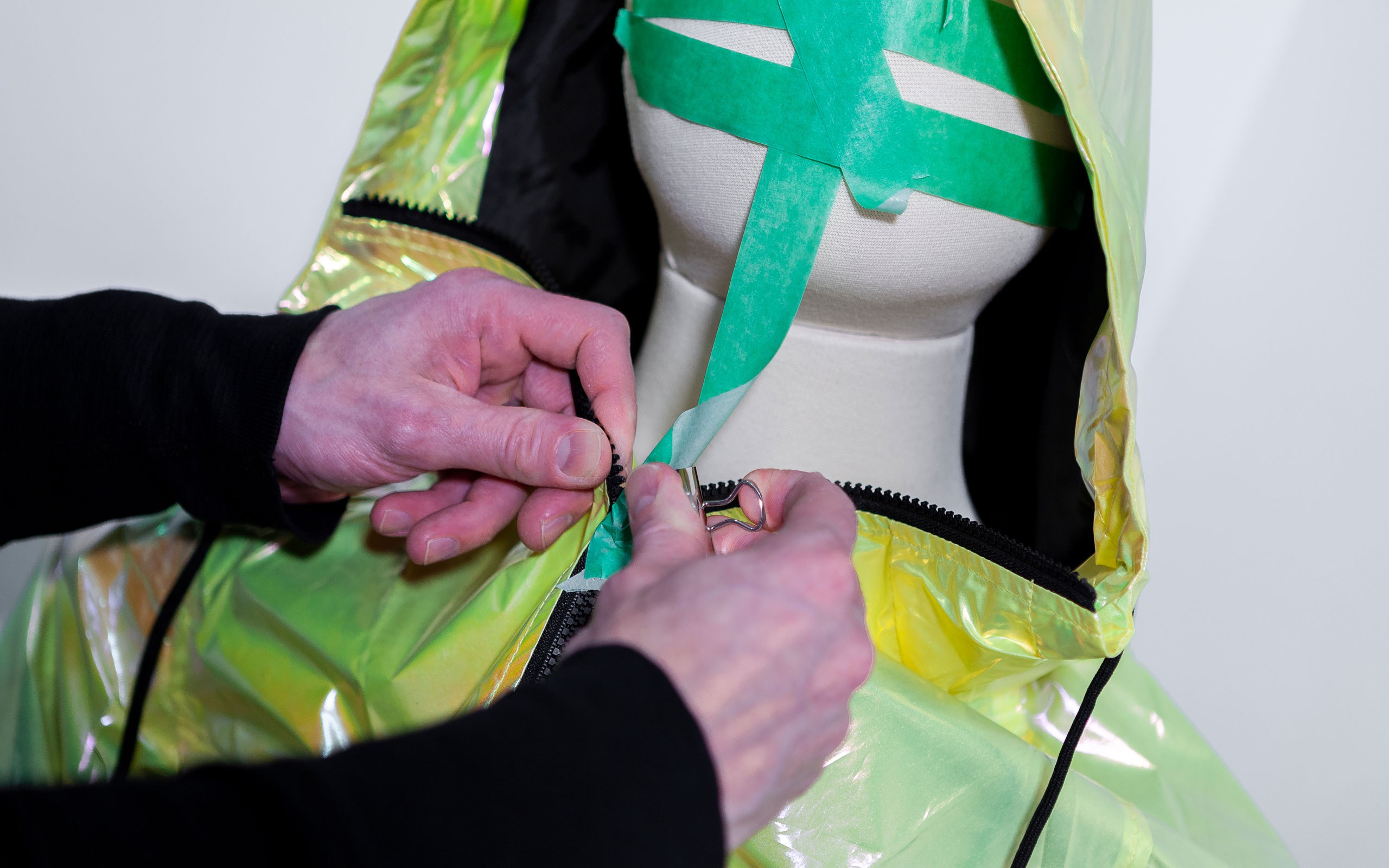
When I first encountered your artworks featuring hoods, I perceived them as a bit frightening, almost like encountering an alien. Is this mirror image effect the cause for my reaction?
In the newer paintings because everything is identical on each side, it sometimes starts to have human or animal qualities, as if there are eyes or mouths. This can create a surreal figurative presence in some of the paintings. It is an interesting unforeseen quality, as I did not anticipate this outcome when I began working on these paintings. Now I see this as a very interesting twist as it appears that the jacket itself can present or feel like a life form rather than a life form beneath it. It's becoming harder to sense the presence of a human being underneath the jacket because the surface feels as if it has some kind of alien appearance. This heightened level of intensity has started to transform the experience.
What is your usual routine like in the studio as an artist?
My typical working hours are Monday to Friday from 9 am to 5 pm. I’m usually out of the studio for the weekend. If I become really busy getting ready for a deadline or if I am running behind schedule, then I may also work evenings and weekends. Last winter I was working on a new painting which took around three and a half months. During that period, I worked every single day in order to get it done on time for a show. I usually never work like this as I find it can become very challenging to stay focused every day.
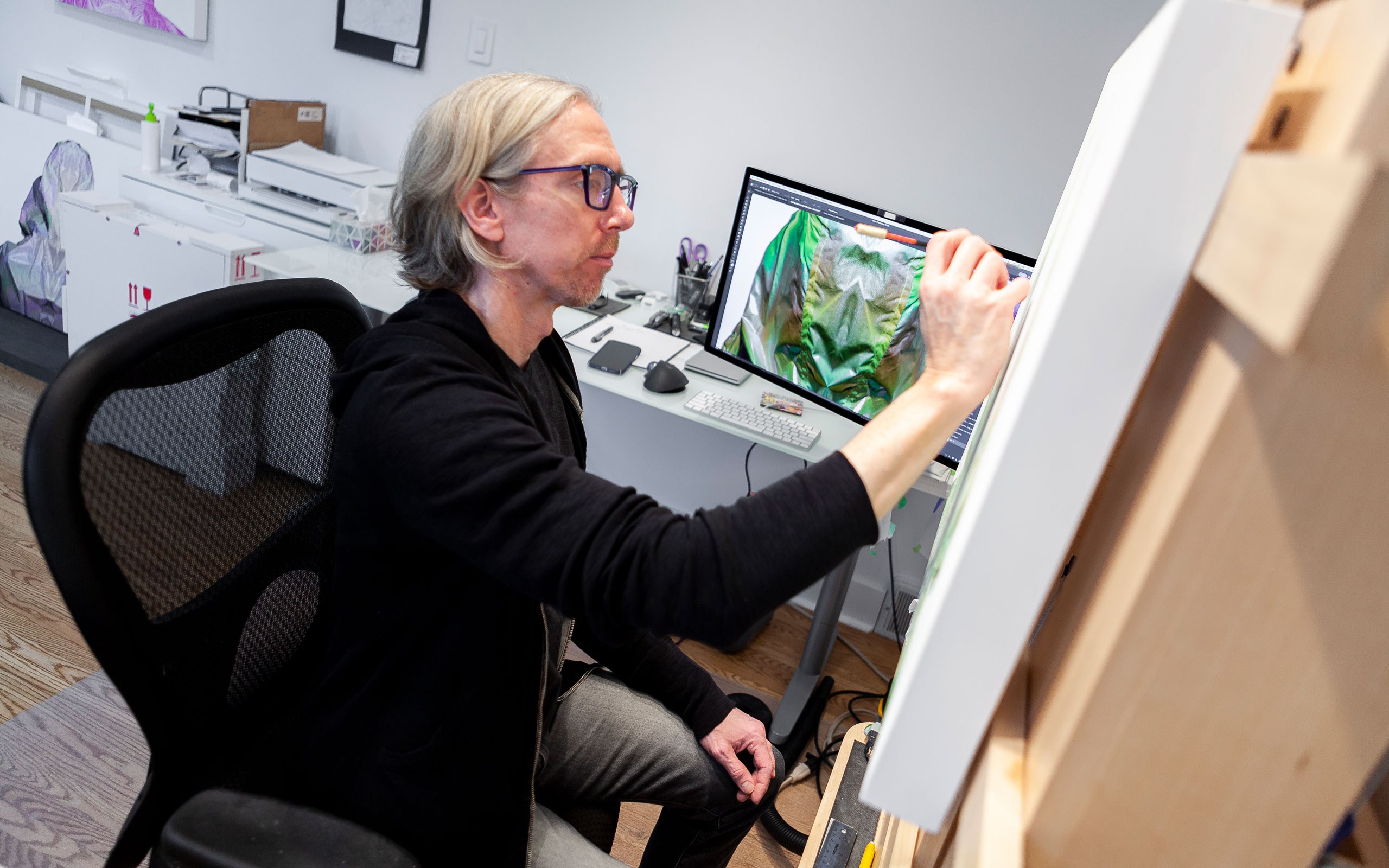
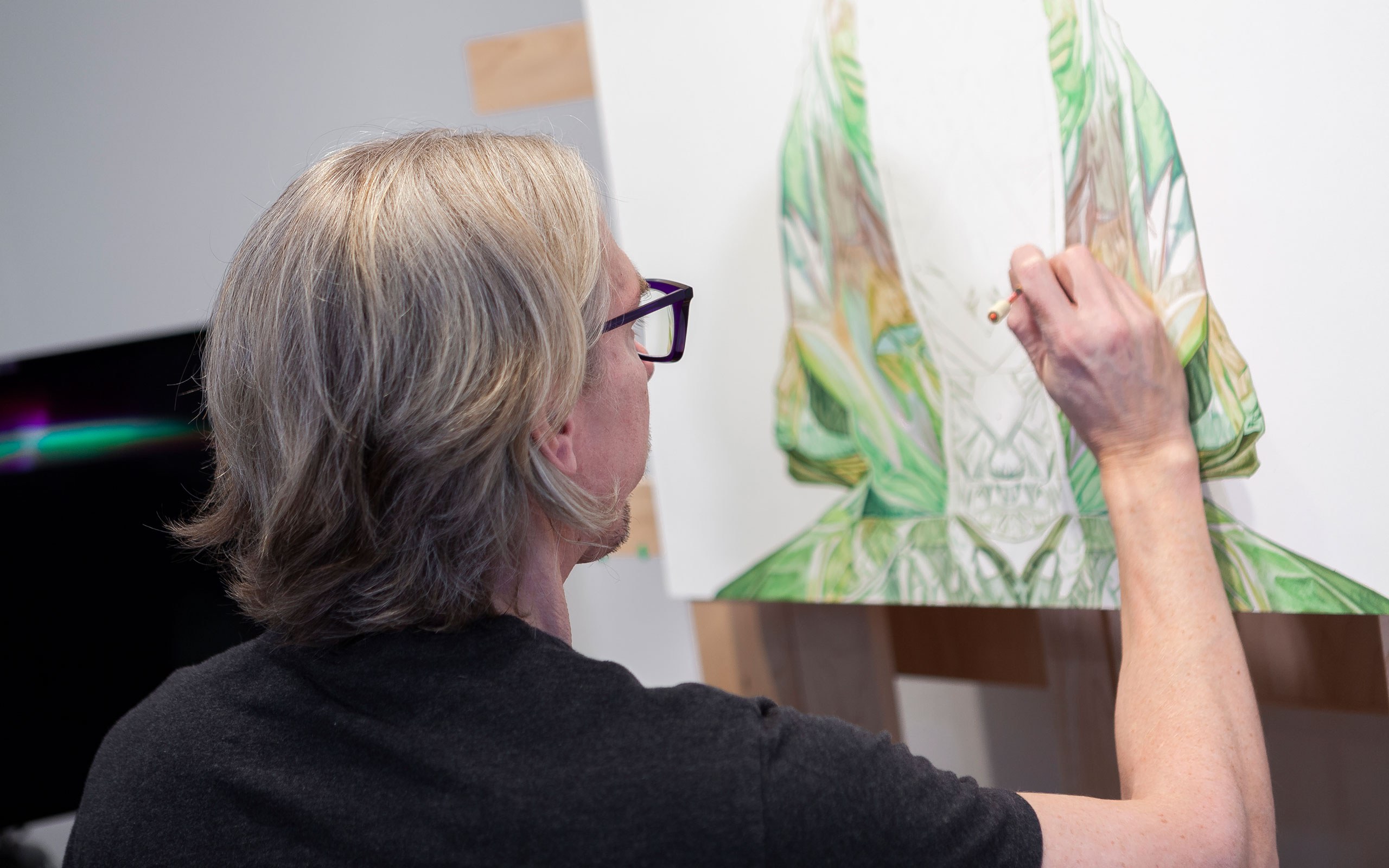
Could you shed some light on your upcoming projects?
I’m currently working towards a solo show planned for late spring at Stems Gallery in Brussels, which will be my first show with them. There will be 3-4 paintings in this new direction of symmetrical design and the jackets will be full of many colorful forms.
Your first solo exhibition took place exactly 20 years ago, in 2004, at 303 Gallery in New York. Do you remember how it happened?
I was not expecting it. When I attended Columbia University in New York we all aspired to find a gallery, but we were also a little worried about what was going to happen after we graduated. One of the courses which all students took was a mentorship week twice a year with different visiting artists working in NYC. Along with a group of friends I undertook my mentorship with Collier Schorr. We all had a good relationship with Collier and eventually in my last year she and I had a conversation about my work, which resulted in her introducing me to Lisa Spellman of 303 Gallery. Just before I moved back to Canada, Lisa visited my studio. She liked a painting I had in the studio and she asked me to bring it down to the gallery the next day. Shortly afterwards I moved back to Canada and shipped paintings as I finished them. Lisa became more familiar with my work and we developed a really good connection. Then in 2004, I did my first solo show with 303 and they began representing me. It was my first show, so I had no idea what to anticipate.
Eventually it was a huge success. How did it make you feel?
When the show happened, it was well-received and incredibly exciting. It's hard to believe that was 20 years ago now. To be honest, at that time I didn’t fully grasp the significance of the moment. I was thrilled to be working with the gallery, but didn’t fully comprehend the potential for a long-term relationship at the time. The support I received and the conversations I had with everyone involved made everything feel natural. We had already known each other for a year before the show, so by the time it came around we were all friends so this helped keep me grounded throughout the process.
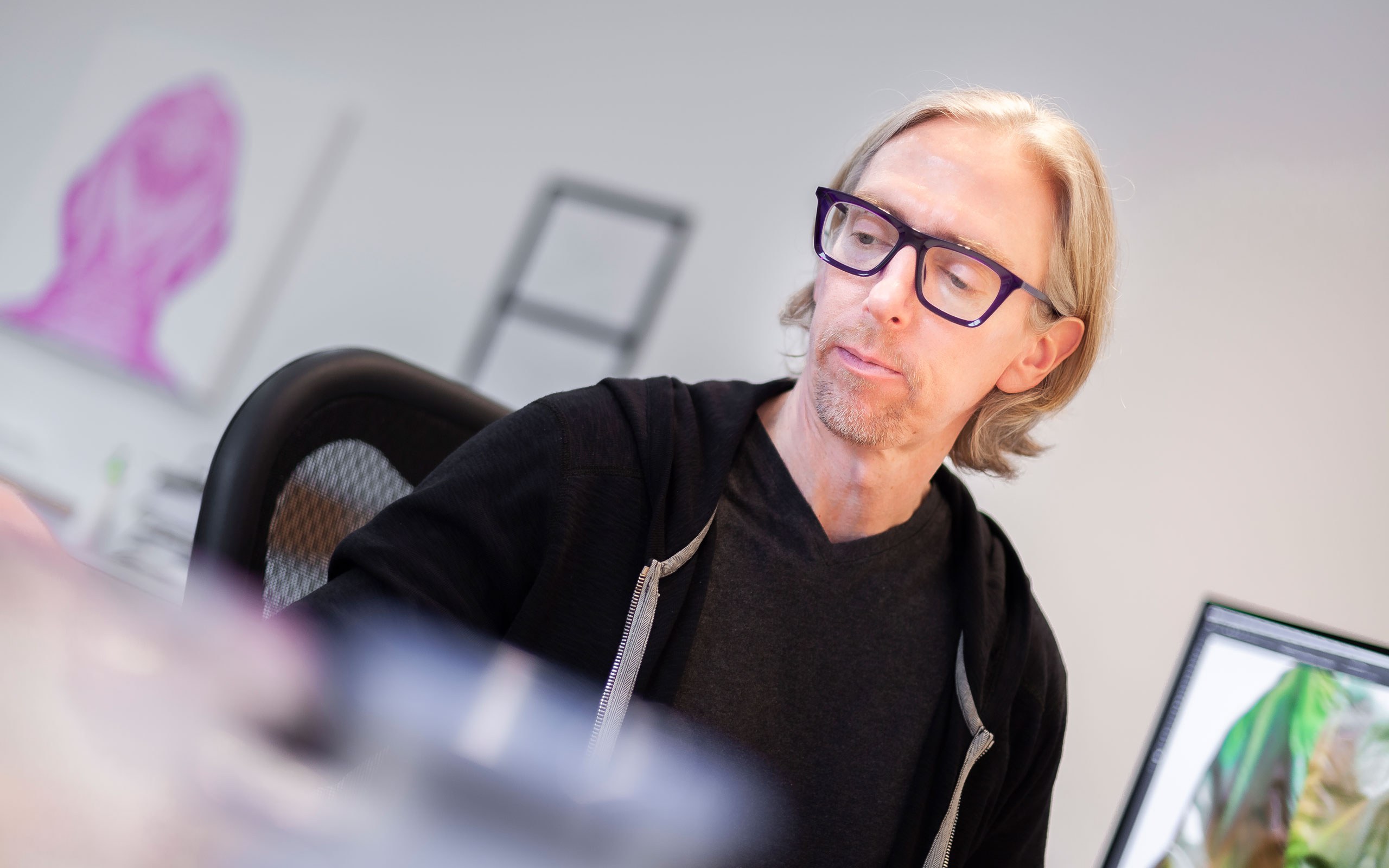
Looking back 20 years ago, what are your takeaways from that time?
Even when sometimes I get grumpy in the studio or I’m tired or I’ve got deadlines, I always remind myself of how lucky I am to be in this position. I work hard at the paintings and the gallery works very hard for me too. This has allowed me to be a full-time painter all these years. I don’t know what else I would do.
Have you ever had a plan B?
My alternative plan was to pursue an MFA degree and possibly get a teaching job, as I didn’t anticipate being a full-time painter. However, I'm not sure I would have made a good teacher. Although I can be extroverted, I love being secluded alone in my studio, especially when I need to concentrate for long durations to complete a single work.
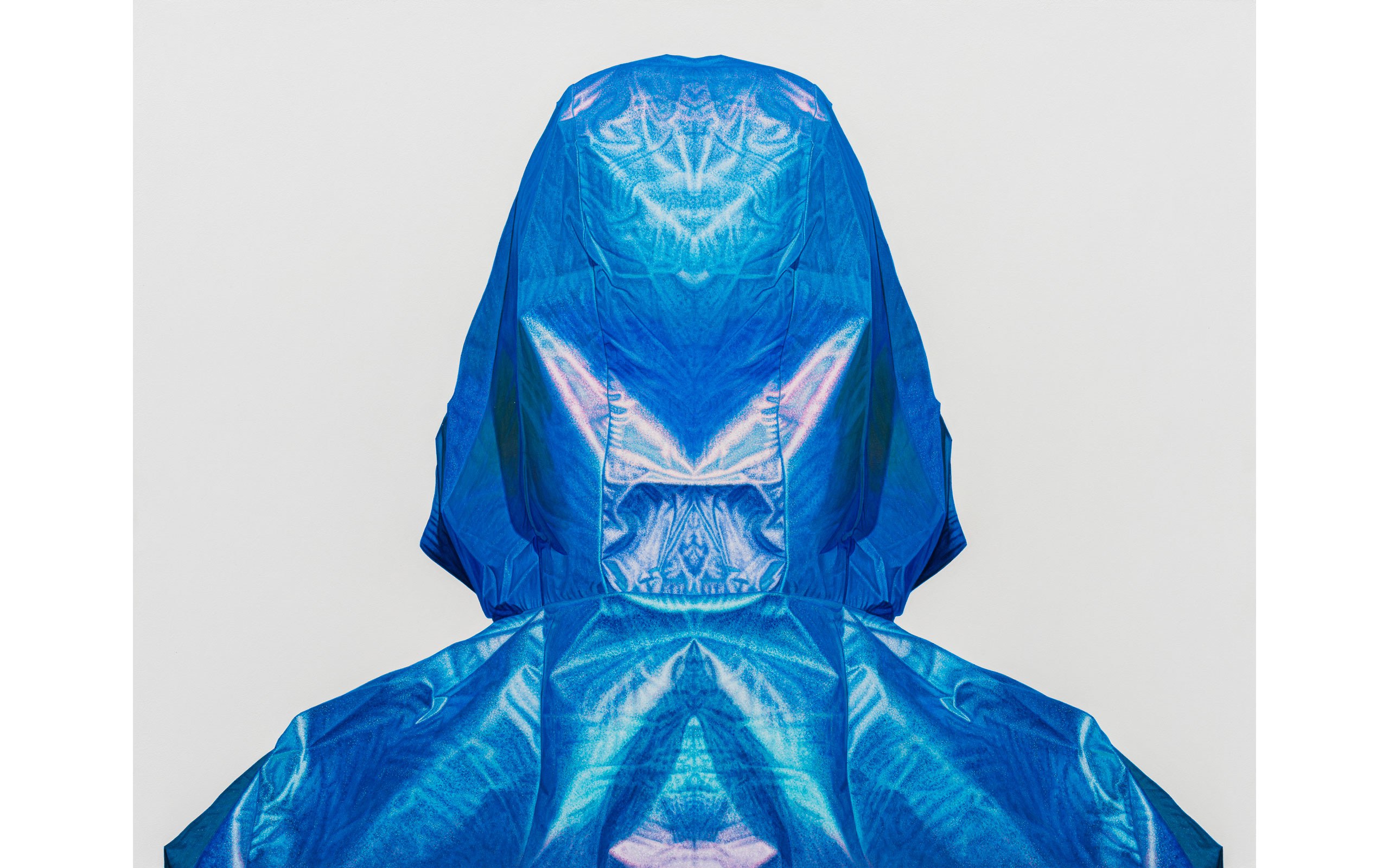
KAREL FUNK, Untitled #110, 2023, Acrylic on panel, 27 x 34 3/4 inches (68.6 x 88.3 cm)
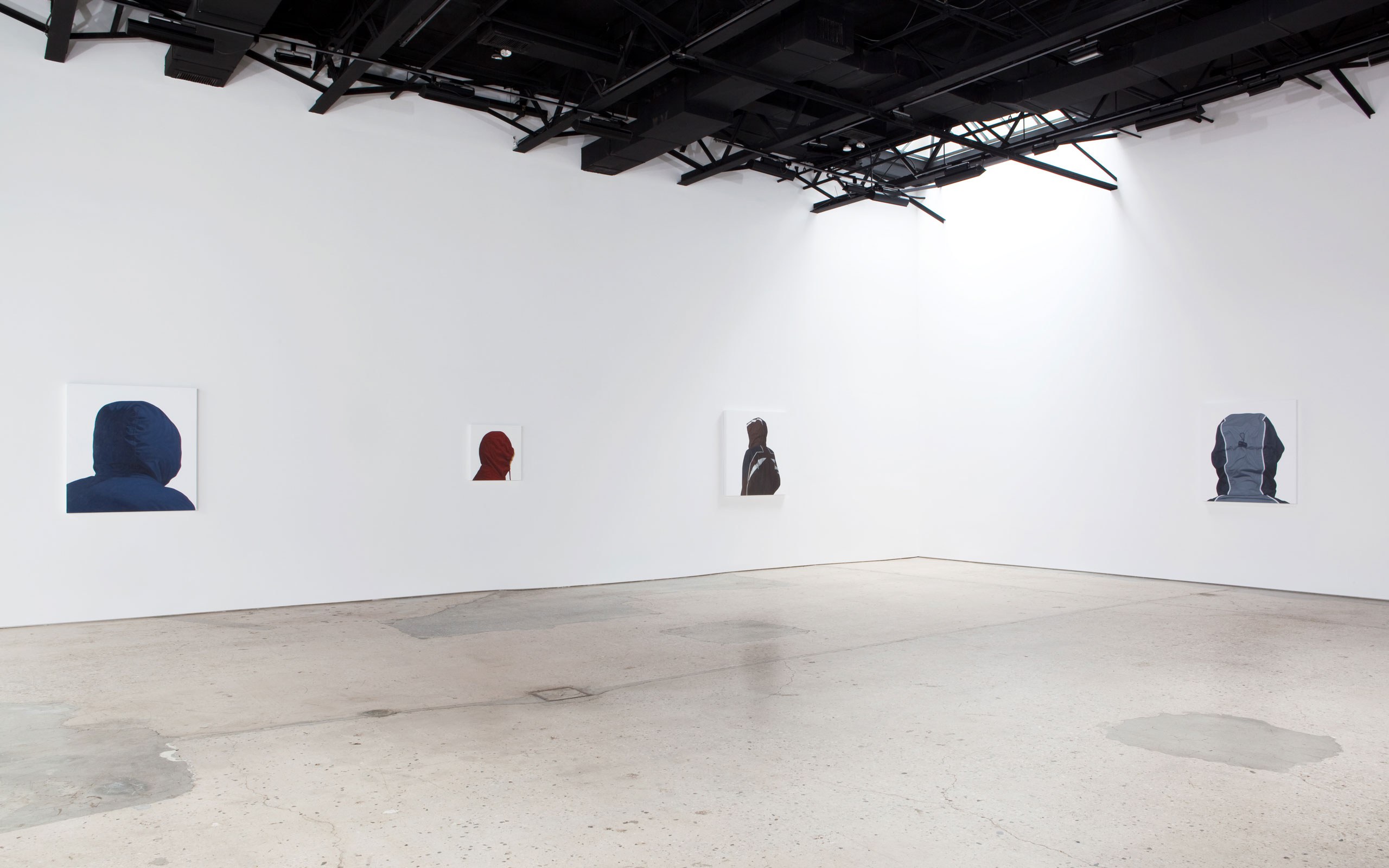
Installation view: Karel Funk, 303 Gallery, 547 W 21 Street, New York, 2010
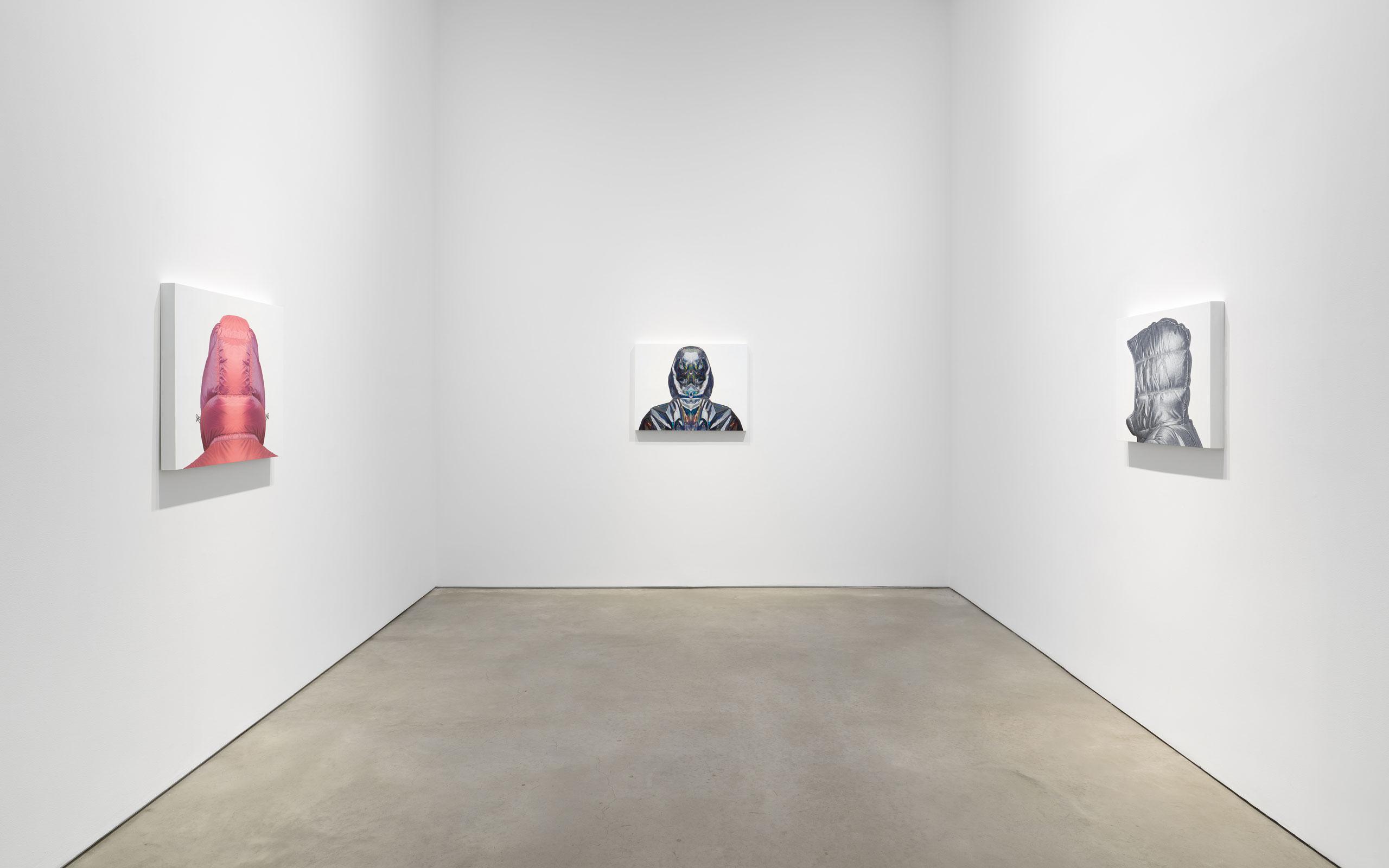
Installation view: Project Room: Karel Funk, 303 Gallery, New York, 2022
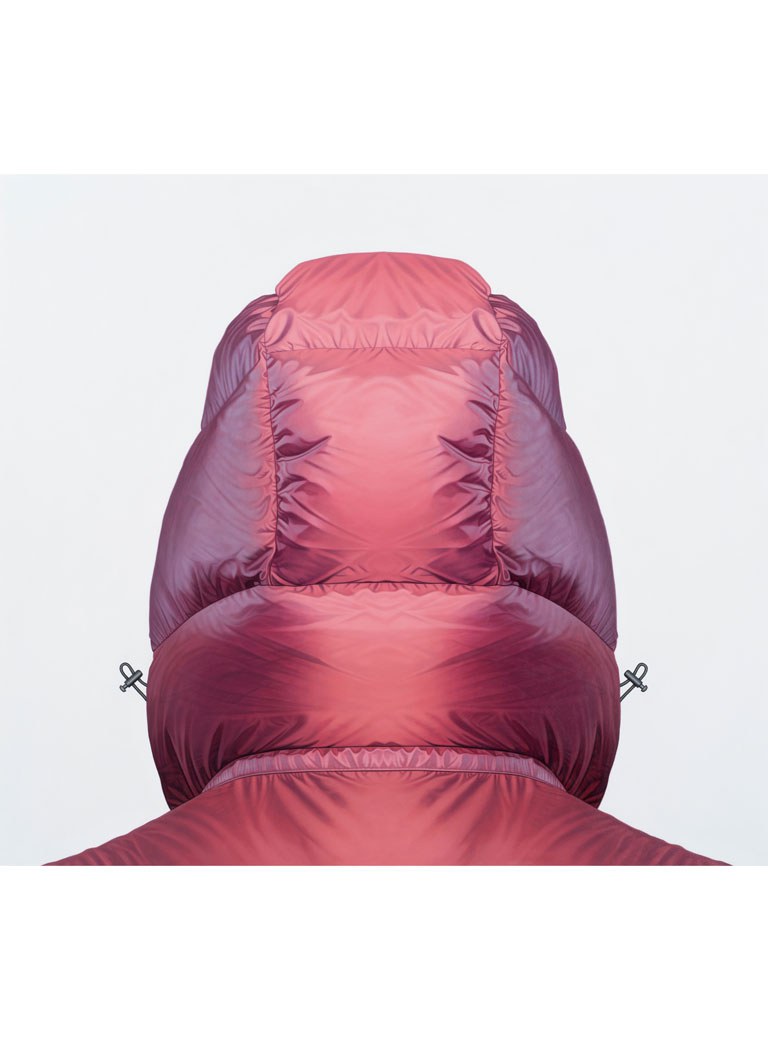
KAREL FUNK, Untitled #101, 2021, Acrylic on panel, 26 x 29 inches (66 x 73.7 cm)
Interview: Anton Isiukov
Photos: Dave Swiecicki


